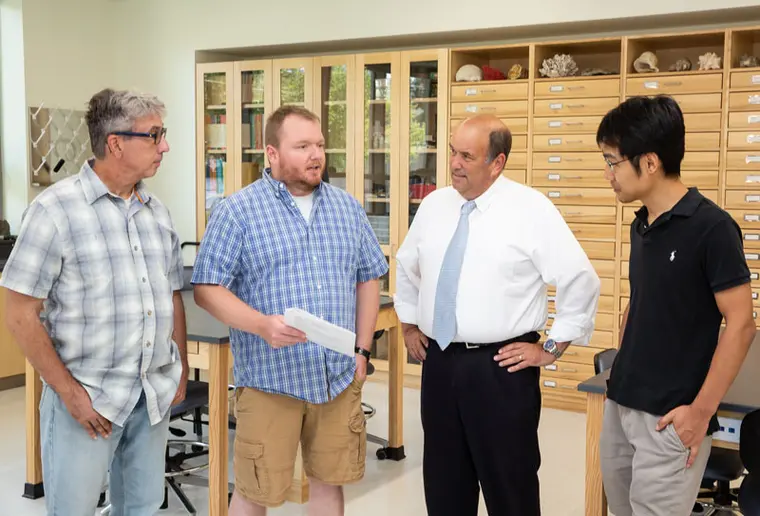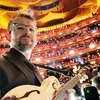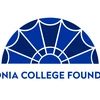Dr. Thomas Hegna (second from left) with fellow co-PIs (from left): Drs. Matthew Purtill, Michael Jabot and Wentao Cao, who successfully prepared SUNY Fredonia’s NFS grant application for just over $335,000 to purchase an SED-EDS system for use in the renovated Houghton Hall.
The National Science Foundation has awarded a grant of over $335,000 to SUNY Fredonia to purchase a Scanning Electron Microscope (SEM) that will significantly expand research opportunities across multiple science disciplines for students and faculty and also lead to new research collaborations with other educational institutions.
Department of Geology and Environmental Sciences Assistant Professor Thomas Hegna, the principal investigator, indicated the SEM is equipped with an energy dispersive x-ray spectroscopy (EDS) detector that will enable students and faculty to image extremely tiny objects and to determine their chemical composition.
“With this machine, we will have the ability to do energy dispersive x-ray spectroscopy, which is basically an attachment that lets us visualize an elemental composition; we can see what elements are making up different parts of an object.” - Dr. Thomas Hegna
“With this machine we will have the ability to do energy dispersive x-ray spectroscopy, which is an analysis that lets us visualize elemental composition; we can see what elements are making up different parts of an object,” Dr. Hegna explained.
“Instead of using photons, like we use light to see, it will use tiny electrons to create images of very, very tiny objects, down to nanoparticle science, or nanometers,” Hegna said. The electrons interact with atoms in the sample, producing various signals that contain information about the surface topography and composition of the sample.
Student access is what will set SUNY Fredonia apart from universities that have SEM-EDS systems, according to Hegna. “This equipment will be able to be used by students; it’s not going to be walled off and used (only) by professors, or have a fee associated with it that students would have to pay.”
Use of the SEM-EDS system will be incorporated into upper-level courses, such as mineralogy, petrology and paleontology in the Department of Geology and Environmental Sciences, and also in biology and chemistry courses.
Student use of an SEM-EDS will foster analytical skills, technical experience in instrument operation and data evaluation which will better prepare them for careers in science. Students enrolled in the sciences will learn how to use this modern equipment in their classrooms and research projects, according to the overview in the project summary of the NSF proposal. The SEM-EDS system will collaterally be used in the university’s outreach program – targeted to regional high school STEM teachers and students – based on a series of virtual presentations on topics based in the Next Generation Science Standards.
Hegna said he was relieved SUNY Fredonia’s grant application was approved. “We applied last year and were denied, but we got really good feedback, so I was optimistic for this year. The grant goes through a peer review process – a pretty intense one – with four reviewers, plus a final panel evaluated the application. We competed with other universities for the federal money.”
Serving with Hegna on the grant team were co-principal investigators Drs. Wentao Cao and Matthew Purtill, of the Department of Geology and Environmental Sciences, and SUNY Distinguished Teaching Professor Michael Jabot, of the Department of Curriculum and Instruction. Also involved in the application process were Drs. William Brown and Courtney Wigdahl-Perry, both of the Department of Biology, and Dr. Allan Cardenas of the Department of Chemistry and Biochemistry.
Specific ways faculty members involved in the NSF application process will utilize the SEM-EDS system in their respective courses is also outlined in the project summary.
A current SEM-EDS system is considered essential for the advancement of multiple lines of research at SUNY Fredonia, as well as enabling students to spend substantive time on the system within their coursework as science majors and in faculty-mentored research.
Hegna, who has over 10 years of experience operating SEM-EDS systems and training students as a research mentor, also led a successful grant team at a university where he previously taught that was awarded an NSF grant for a SEM-EDS system.
The SEM-EDS system will also be utilized in a broader outreach effort aimed at high school classrooms, according to the project summary. This outreach will involve presentations by Hegna, Cao and Purtill that merge SEM-EDS analysis with curricula keyed to the Next Generation Science Standards. This outreach will be conducted through a recruitment of partnership with high school educators who are well-connected to SUNY Fredonia’s STEM initiatives. They will give high school students extended ideas of what science is and how it works, model scientific research and aid in motivating STEM career paths.
The NSF grant covers the entire purchase, plus related equipment and installation. Based on his prior experience in SEM-EDS systems, Hegna anticipates the equipment will be purchased and installed during the 2022-2023 academic year and be functional by the fall semester of 2023.





